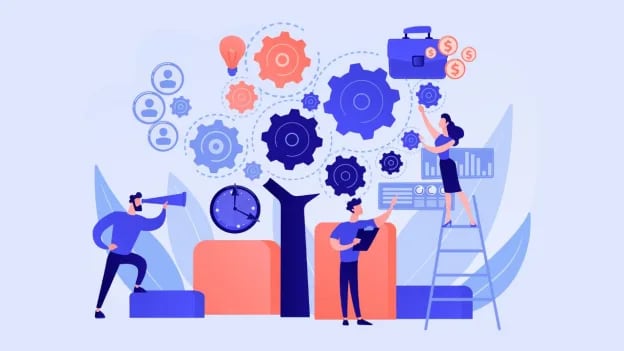Enabling HR to overcome its Achilles Heel: Change Execution


Businesses today expect HR to be a critical part of their success story. The focus on skills, agility, and productivity amid the fast-evolving business and technological landscapes means the entire HR industry needs to step up and respond better to business challenges. Paired with macroeconomic shifts in regions as diverse as Asia Pacific and the Middle East, the role of HR is becoming central to driving business success.
This was a key theme in the SHRPA State of the HR Industry Global Report 2024. Looking at the external factors shaping business outlook in the next 12 to 18 months, labour market shifts are in the top three. Across APAC and ME, we see that while tech innovation and growth in consumer spending reflect a positive sentiment, talent is at the inflection point. If not directed well, it will impede the business. The role of HR as an accelerator of business success will become more critical in 2025.
But is HR ready and executing for success?
HR’s Achilles Heel: Change Execution
Looking at the last questions, the SHRPA report identifies a critical gap that HR needs to address in 2025. While across most parameters that define change readiness, HR leaders across the regions show high levels of satisfaction, it’s in their inability to execute where the gap emerges.
Today 77% of HR Leaders are change-ready and able to adapt to business and talent disruptions. Yet, 64% are set to miss out on HR transformation, if it’s not people-centric and tech-enabled.
Given how talent attraction, building leaders, and raising productivity all were identified as major challenges by HR and business leaders in the report, their inability to lead people-centric and tech-led change execution hinders HR’s ability to create the right business impact.
Criticality of AI and Analytics
The gap is particularly large when it comes to leveraging technologies like AI and analytics. While AI is expected to play a major role in making the execution of HR processes more impactful, over 84% of the HR leaders surveyed in the report say they face a major challenge adopting newer technologies like AI. Another 48% highlight their inability to raise productivity through AI and analytics.
Highlighting the importance of these technologies today, Shinichiro Uzawa, Asia-Pacific People Consulting Leader, EY, notes that, “with the current business environment globally is facing a serious labour shortage, and the use of AI as a substitute for human workers is becoming essential.” For the HR function, the talent leader shares how “the use of generative AI is particularly expected in the fields of recruitment, engagement, and learning. Additionally, employees are expected to actively use tools such as generative AI to increase productivity.”
The criticality of being able to leverage AI and analytics solutions emerges as a key HR imperative for 2025. Enhancing change execution speed will be key for HR in the coming 12-18 months. To do this 59% of HR leaders will prioritise effectively leveraging AI and Analytics to survive and thrive.
But to be able to make this successful, HR will need to improve its HR tech implementation and find a way to embed newer technologies better.
Advancing Tech-Maturity Levels
While technology solutions and tools today greatly improve different HR functions, their low adoption across companies remains a challenge. Across APAC and ME, a major portion of companies remain in what the report categorises as Laggards— those with just a basic HR automation suite—at around 39%. This is followed by adopters who use data-driven tools at 25%. Finally, progressive companies (36%) that today have integrated HR systems with advanced AI and analytics capabilities.
Comparing these three categories, the SHRPA report notes that 6 in 10 Companies, With Low HR Tech Maturity, are Falling Behind the Change Execution Journey.
Low tech maturity for Shinichiro today is partly because of disparate data systems that companies have. “Regarding HR-related data, the lack of consistent definitions and low accuracy of data often leads to the inability to effectively utilise HR technology because the data is not reliable,” he noted, “especially in recent years, there is a desire to commonly utilise HR data globally, but in reality, the data definitions vary by country, and the data often includes inconsistent definitions and inaccuracies, preventing its effective use.”
The other challenge that emerges is successfully integrating newer tech solutions with existing tech architectures. Speaking to People Matters, Gina Kuek, APAC Leader, People Experience Business Partner, Zoom adds that “one of the top challenges for many organisations is integrating new technology solutions into existing systems. Employees that are using different apps to get work done are likely paying a ‘toggle tax’, which may cause their daily productivity to suffer.”
We will dive deeper into the challenges of adopting newer technologies and transitioning to more mature HR tech suites in further articles but overcoming these barriers remains crucial to enabling change execution.
The findings and insights are based on the latest People Matters SHRPA State of the Industry Report. Get you copy here.


